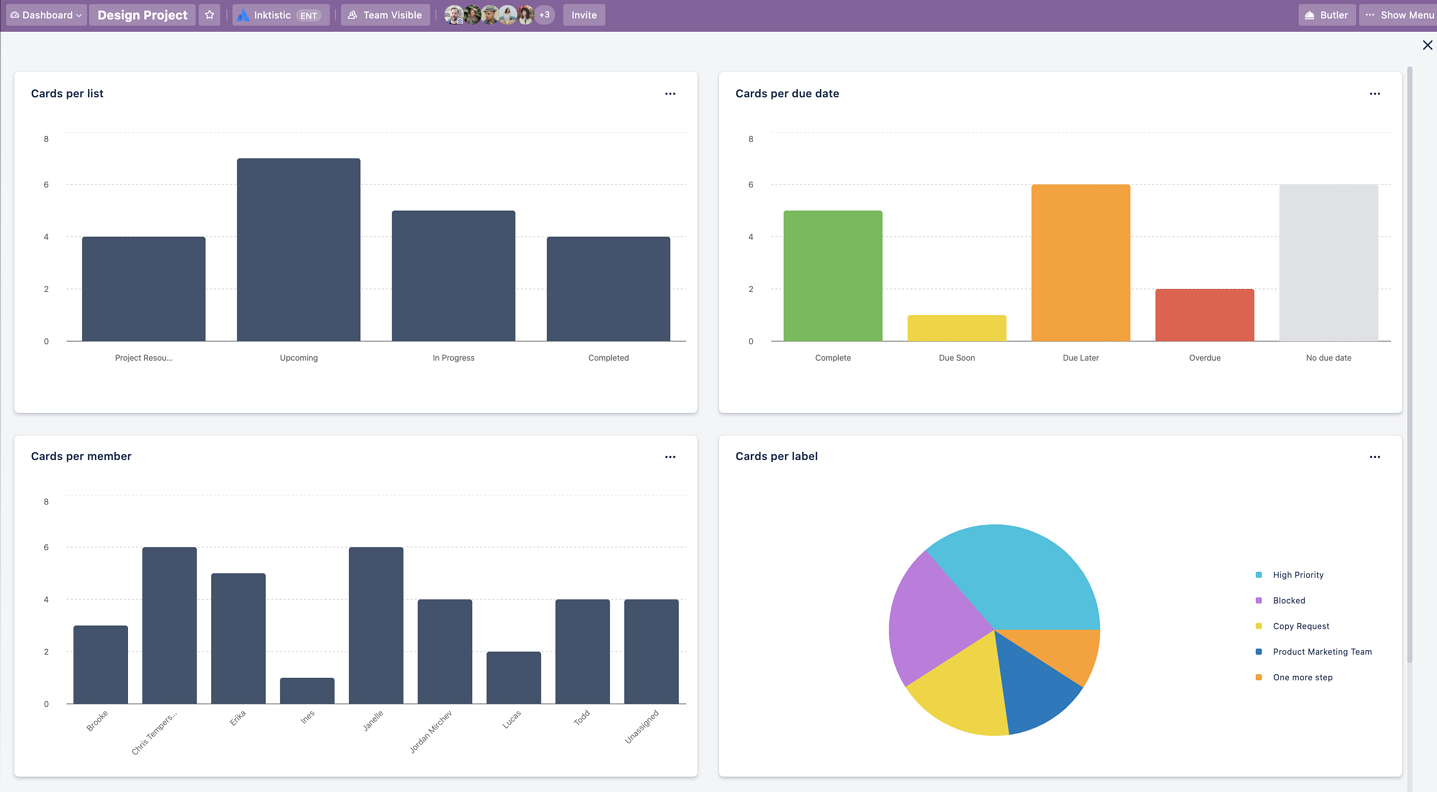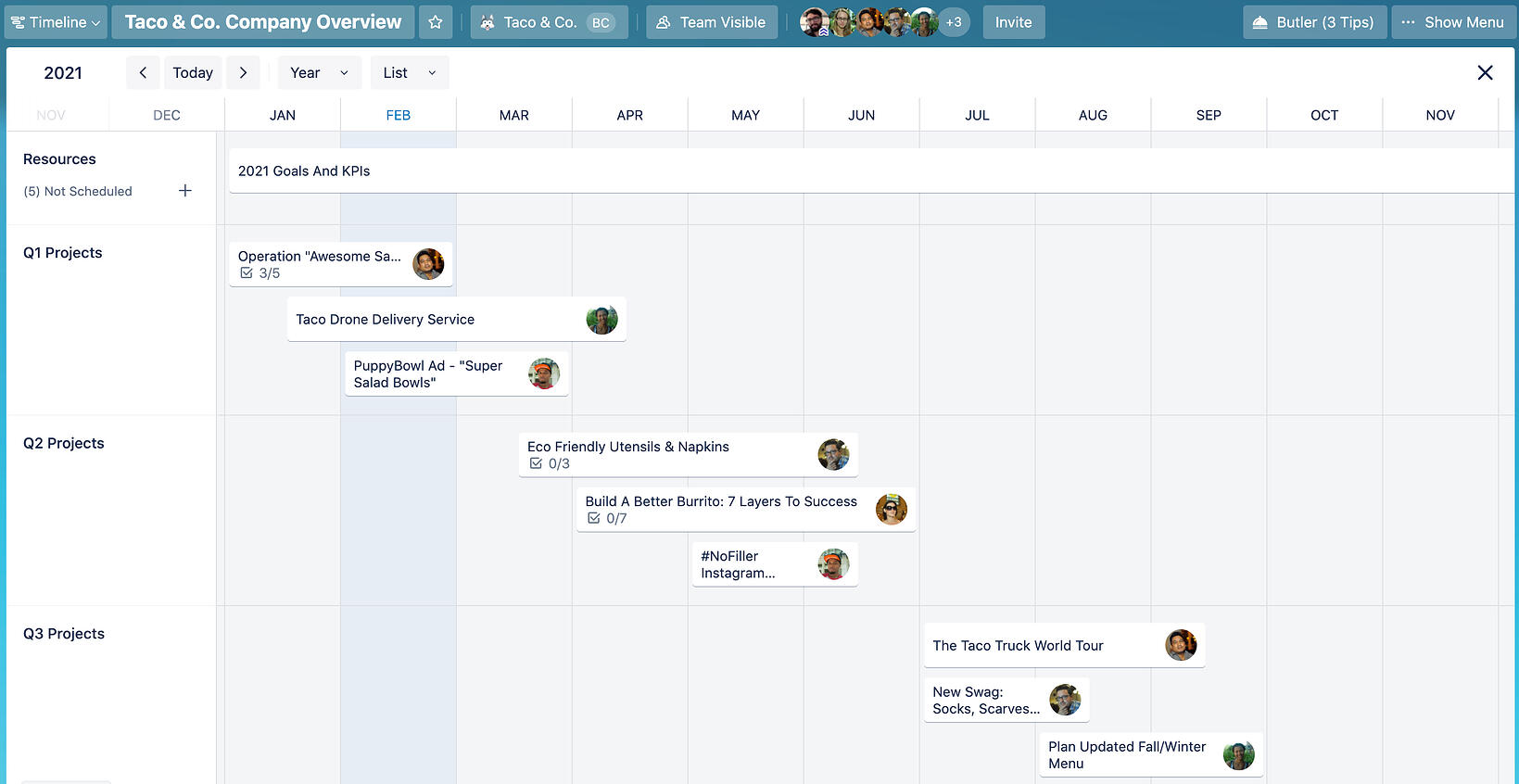You just received the news that no manager wants to hear: One of your best employees is hitting the road. The reason? They’re burnt out.
Unfortunately, it’s something that more and more leaders are becoming accustomed to hearing. One June 2021 study conducted by Monster.com found that a whopping 95% of employees are thinking about quitting their jobs—and burnout was the most commonly cited reason for wanting to leave. It seems like more employees are bailing on their jobs than ever, a phenomenon that’s been coined “The Great Resignation.”
It’s scary stuff for managers and undoubtedly leads to this question: What can you do about it? How can you prevent burnout from creeping up and sabotaging your team?
Here’s a hint: manageable workloads. Harvard Business Review points to an unrealistic workload as one of the leading causes of burnout, which means leaders quite literally can’t afford to spread their team members too thin.
How To Maintain Reasonable Workloads (And Expectations) On Your Team
But, here’s where things get tricky. Your team has a lot going on—there are seemingly endless responsibilities, targets, and requests to meet. Striking the balance between satisfying those obligations and keeping things in check for your team feels like a tightrope walk.
Rest assured, it’s doable. Like anything else, it’ll just take some planning and thoughtfulness.
1. Maintain Open Lines Of Communication
There are calculations that you can use to figure out your team’s capacity, and they can be a helpful starting point. But, while those formulas work well on paper, they fail to account for the human emotions and experiences that impact our work.
That’s why the best way to get an accurate read on workloads is to have honest and candid conversations with team members. Even a brief weekly check-in provides an opportunity for them to share if they’re feeling stretched thin or if they have some wiggle room to take on some additional responsibilities.
As the leader, it’s your job to take charge of this conversation. To make the most of those sit-downs, come prepared with a few workload-specific questions like:
- How are you feeling about your workload this week? Or in general?
- Are there any tasks that I can help you delegate and prioritize?
- Are you running into any challenges that are slowing your progress down?
Those questions show that you’re committed to helping your direct reports have smoother workdays. But ultimately, you don’t want them to keep their lips zipped about overwhelm until they have a chance to meet with you.
Open lines of communication go both ways, so maintain a high degree of psychological safety on your team so that employees feel comfortable approaching you—scheduled sit-down or not—when they have capacity issues, without fearing punishment or disappointment.
Keep in mind that they might not always be forthcoming and blunt, and you may have to read between the lines of subtle remarks like:
- “This week is too much!”
- “Is it Friday yet?”
- “Well, my to-do list just keeps growing.”
- “I don’t even know where to get started.”
While they can sometimes be innocent quips, they could also indicate that an employee is feeling buried and stressed.
2. Keep A Watchful Eye
Open communication is crucial, but it’s not a fix-all—especially since people aren’t always comfortable getting vulnerable and honest with their managers. In fact, more than half of employees admit that they’re afraid to discuss their mental health with their boss.
Continuing to prioritize opportunities for feedback and conversations can help them slowly start to realize that you’re in their corner. But, in the meantime, it’s also your responsibility to maintain a high-level overview of what’s happening on your team so that you can take steps to address workload issues—even before they’re dropped on your lap or in your inbox.
Technology is on your side here. Using a work management or collaboration platform gives you the transparency you need. You’ll have visibility into what everybody is working on, without having to dig through meeting notes, email threads, and calendars.
For example, Trello has a couple of features that make it easier for managers to understand who’s doing what:
- Dashboard view: Displays information about your team’s work status in helpful charts, such as how many cards are assigned to each team member or how many cards are currently overdue.

- Timeline view: Shows cards organized by start and due date. You can sort by team members to understand exactly what they’re working on at any given point in time.

Remember, it’s your job to know what’s happening on your team (without somebody blatantly telling you). So, equip yourself with the tools you need to understand the who, what, when, where, why, and how.
3. Take Action On Feedback
Perhaps your observations have shown you that there’s a bottleneck in one of your team’s workflows. Or, maybe an employee or two has told you that unnecessary meetings are clogging up their calendar and making it hard to get their actual work done.
Little will frustrate your team members more than to listen to their feedback and not make any changes. Their resentment will fester (not to mention, their burnout will increase) while you either keep going as normal or continue to tell them, “We just have to get through this busy time. Or this project. Or this quarter. And then we can reevaluate.”
Yet, that’s what far too many managers do. 59% of employees say that their employer has asked for their feedback, but 18% of employees say they don’t actually see any meaningful changes following those conversations.
If your goal is to help your team (and let’s be honest, it should be) then you need to be prepared to not just collect feedback, but act on it.
When you identify or hear about a workload issue on your team, take steps—big or small—to improve it. A couple of examples might include:
- Problem: Too many meetings are monopolizing employees’ work time.
- Potential solution: Choosing one or two days per week that are designated as meeting-free.
- Potential solution: Requiring that every single meeting has an agenda that’s distributed ahead of time. No agenda, no meeting.
- Potential solution: Evaluating the recurring meetings you have on your team’s calendar and removing any that have become glorified catch-up sessions or could easily be async.
- Problem: Last-minute and urgent requests from other departments put your team in a bind.
- Potential solution: Instituting a more formal work request process so other departments understand your requirements and typical timeline.
- Potential solution: Building a buffer into your team’s schedule to accommodate those unpredictable projects.
Other changes could include implementing new tools, automating certain processes, or even starting the hiring process if you determine that your team just needs more hands on deck.
Regardless of the specific improvements you land on, the important thing is that your team members see that their suggestions and feedback lead to meaningful changes.
4. Learn To Make The Hard Decisions
There are things you can do to shift around priorities, reassign tasks, and extend deadlines to relieve some pressure on your team.
But, here’s the hard-to-hear truth: No amount of juggling will fix a workload that’s overwhelming in the first place. It’s like trying to find a strategic way to stack everything into a carry-on suitcase when what you really need is a Uhaul.
That’s why you need to recognize when it’s time to set firm boundaries for your team, such as:
- Telling another department that you’re unable to meet a request in their timeline
- Prioritizing a task and giving team members permission to completely table others
- Regularly evaluating what tasks are making an impact and eliminating ones that aren’t
These types of decisions can be hard to make (especially for leaders who are used to saying “yes” and making it work), but it’s part of the responsibility of being a manager. You make the tough calls that are in the best interest of your team.
If you’re struggling, a priorities matrix (often called an Eisenhower Matrix) can be helpful for figuring out what your team should be focused on—and what can be pushed to the back burner or fall off the stove entirely for now.
You’ll use the four quadrants to categorize your tasks into the following sections:
- Urgent and Important: These should be at the top of your team’s to-do list, and everything else can take a back seat.
- Urgent and Not Important: If it’s possible to offload these to other resources (whether that’s freelance help, automations, or something else), do so. Otherwise, tackle them next.
- Not Urgent and Important: When your team is currently dealing with an availability crisis, these don’t need to be on the radar and adding stress. But, schedule in some time to start these so you don’t lose track of them.
- Not Urgent and Not Important: Get these off of your team’s plate entirely. You don’t need them.
It’s a quick and intuitive way for you to figure out what you and your team should actually be chipping away at—and avoid overwhelming them with the stuff that doesn’t need to be a concern at the moment.

5. Lead By Example
Unreasonable workloads are often more than a logistical issue—they can be a cultural issue. With that in mind, it’s worth asking yourself this: How’s your workload? As the manager, are you feeling spread thin and overwhelmed?
If you’re grimacing and nodding your head right now, then that’s the first place you need to start. After all, many employees look to their immediate managers as the example they need to follow or the mold for what it means to be successful at your organization.
So, if they see you buried in emails and meeting invites, skipping lunch, and barely keeping your head afloat? That tells them that it’s the norm on your team, and that they’ll either need to get used to it or pack up their desk and find a better fit for them.
Will this step help you move tasks around for your team, push deadlines, or solve pressing bandwidth problems? Nope. But, it will help you ensure that the entire culture and philosophy of your team supports reasonable expectations and workloads—which can be just as important as figuring out the logistics.
Help Your Team Feel Successful—Not Stressed
The last thing you want is to watch helplessly as your best employees walk out the door. If you want to prevent burnout and keep them around and engaged for the long haul, it all comes back to the basics: a manageable workload.










































